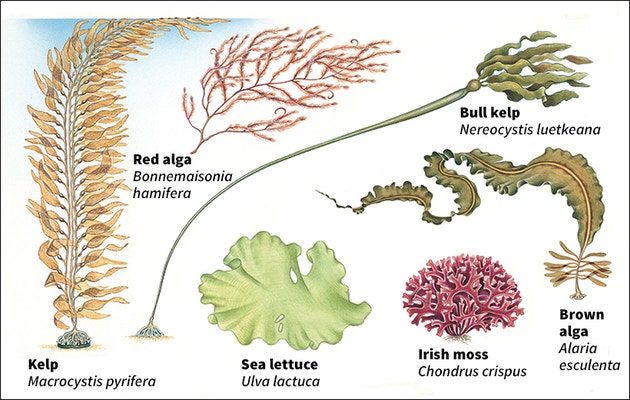
Today students got new seats and started a new unit on Plants, Plankton,
and Biomes. This is probably our longest and most difficult unit
because of the large amount of information that needs to be learned and
applied.
We started class with a discussion about phytoplankton
(cyanobacteria pictured above) and its importance to the ocean and to
the world. Phytoplankton are responsible for feeding most of the
creatures that live away from the shore and they are important for
adding oxygen both to the water and to the atmosphere.

We are learning about plankton! Plankton include organisms
that drift through the seas that cannot swim and do not attach to the
bottom. Plankton can be classified a variety of ways.
The first way is
to classify them by size. Microplankton and nannoplankton require a
microscope if you want to see them because they are so tiny.
Macroplankton are small, but you can see them without a microscope.
Megaplankton are big enough to pick up and include things like jellies.
Another
easy way to classify plankton is into plants and animals. Phytoplankton
are tiny plants that photosynthesize and make their own food.
Zooplankton (belong in the the zoo) and are animal plankton.
Plankton
can also be classified as holo- plankton and mero- plankton.
Holo- plankton
are plankton for their
whole lives (forever) and meroplankton are
only
plankton for part of their lives. The meroplankton may be plankton when
they are eggs, larvae, juveniles, all of those stages, or only some of
those stages. Most of the invertebrates and fish in the ocean spend some
time in their life as a plankton because it allows them to spread
around the ocean and find new places to live. This photo is a
meroplankton snail larvae that grows into a poisonous cone snail. Part
of its body hardens in to the shell it carries for the rest of its life.
This is my favorite website about plankton and it is where all my photos come from. Check out the other types of meroplankton.
Students
have drawn their own plankton, tried to match meroplankton to the adult
forms, and are currently designing plankton to compete in the Plankton
Grand Prix - where the object is to sink slowly.
 We
finished class by discussing coral reefs and passing around coral
skeletons made of calcium carbonate that I have collected on my travels
and inherited from my grandmother. Each hole in the coral houses a
polyp... and all the polyps make up the coral colony. So the polyps make
up a superorganism. We then watched some BluePlanet and learned about
some of their predators like the crown of thorns sea star and saw how
the corals that sometimes look like rocks are able to attack and eat
each other.
We
finished class by discussing coral reefs and passing around coral
skeletons made of calcium carbonate that I have collected on my travels
and inherited from my grandmother. Each hole in the coral houses a
polyp... and all the polyps make up the coral colony. So the polyps make
up a superorganism. We then watched some BluePlanet and learned about
some of their predators like the crown of thorns sea star and saw how
the corals that sometimes look like rocks are able to attack and eat
each other.




























